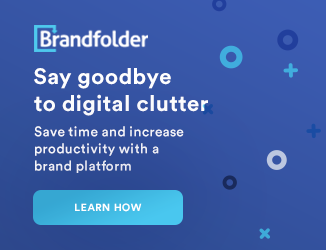Hubspot's latest State of Marketing report found that 73% of marketers acknowledge personalisation as important. Yet, only 35% believe they successfully deliver a truly personalised experience to their customers.
Time-consuming, wasteful processes in creating and adjusting content have contributed to this gap and made it difficult for teams to personalise content at scale. If you see this problem within your organisation, you need a new approach to content creation. Modular content offers a solution to dynamically adjust and tailor content to meet customer preferences and behaviours.
A modular approach to creating and managing content offers more than improved processes. That same Hubspot report found that 94% of marketers believe personalisation generates increased sales, and 96% see it leading to repeat business. So, personalisation is not only good for your internal team, but it also supports your bottom line.
How modular content creates the building blocks of personalisation
You know that omnichannel delivery is a must-have to compete today. But can your marketing team keep up with these demands? A 2021 Forrester Study commissioned by Sitecore found that 73% of marketers use traditional web CMS for channel-specific content, with 43% creating content for just one channel.
A headless approach to content management reshapes how teams distribute digital content by decoupling content authoring and storage from the display and delivery platforms to offer the flexibility and scalability needed when distributing omnichannel content.
Separating content creation from the presentation layer provides much-needed flexibility and scalability for omnichannel distribution. A headless CMS enables today’s organisations to dynamically deliver content across websites, apps, e-commerce platforms, and other digital mediums supporting customer experiences.
It’s important to note that a headless CMS approach is not always the right solution for every business. I primarily see this benefiting businesses with complex websites, content and data feeds that require an alternative to the rigidity of traditional Web CMS platforms.
Thirty years ago, marketing content primarily existed on printed materials like magazines and billboards. Today, we see it just about everywhere in our daily lives. Ads on social media serve up relevant advertisements, storefronts flaunt the latest products, and our email inboxes receive a healthy flow of promotional material linked to offers and personalised suggestions of what we might like to consume that suit our interests and choices.
When you think about it, you expect consistent, engaging and personalised experiences across all these mediums, and so do your customers. But, curating and delivering content for each platform, tailored to each individual personal preference, is no easy undertaking. Too often, the management processes include copying and pasting information or making small changes to images and text to suit each channel. Hubspot’s State of Marketing report found that the average marketer spends 6 hours daily manually completing administrative or operational tasks similar to these.
To meet customer expectations and overcome time-wasting challenges, you need a new approach to content management. This is where an omnichannel content platform (OCP) comes into play. With it, teams can plan, curate, manage, localise, and distribute content across multiple channels from a centralised location. This is referred to as headless content delivery. What elements define this solution?
Headless Content Delivery: A game changer for scaling personalised content
Today, we live in a multichannel world where there are more ways to share content online and offline. You have likely seen a campaign printed on the side of a bus that you later saw in the sidebar of a website, recognisable due to the consistency of the advertisements and messaging. Perhaps the ad even mentioned the name of your city.
For a team to achieve this level of consistency and personalisation, they need full visibility of all content over online and offline channels. Yet, these systems are often disconnected from the content operations mechanics and require manual coordination between the marketing team, third-party providers and digital content creators.
Headless content delivery is one solution to this persistent problem. So, how does it work? And why is it a game-changer for scaling personalised content?









